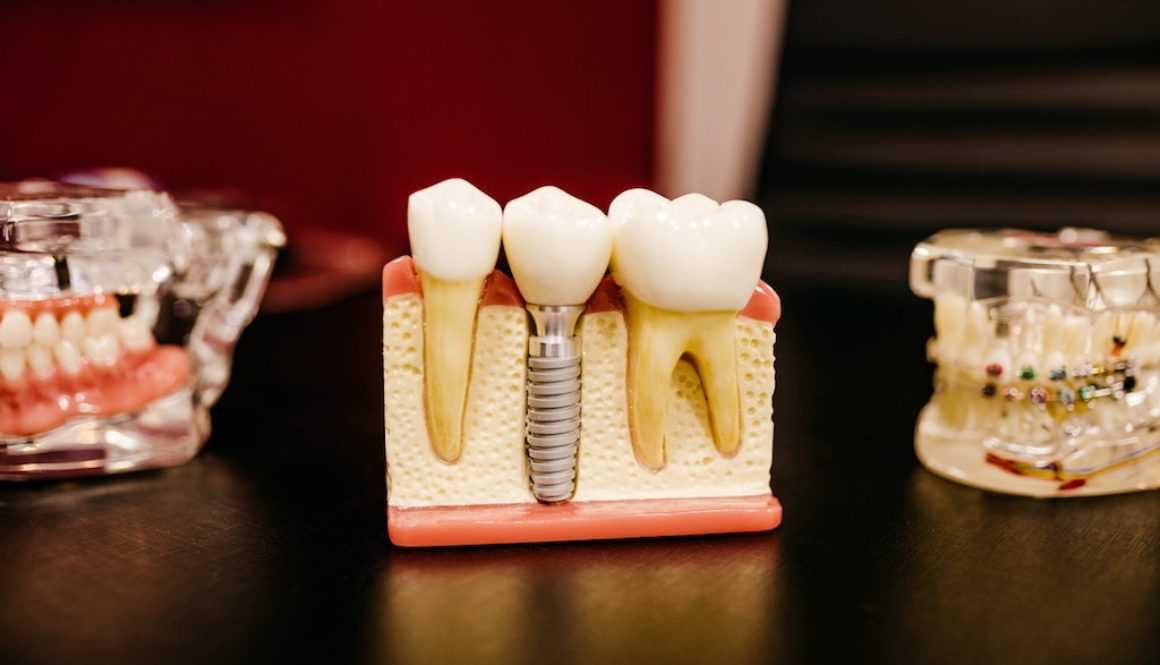If oral health matters, how can we prevent rural residents pulling their teeth out?
Everyone experiences oral health problems at some stage of their life; and the mouth and oral cavity is central to people’s wellbeing and identity. While oral diseases are largely preventable, they often remain untreated and persist. With the need to improve oral health impacted by COVID-19 yet recognised as a major public health issue, what is access to oral and dental care like for people living in rural places? Jessica Sellick investigates*.
………………………………………………………………………………………………..
What is oral health?
It is a key indicator of overall health and wellbeing and is primarily concerned with teeth, gums and the mouth. It encompasses a range of diseases and conditions such as dental caries, periodontal (gum) disease, tooth loss, oral cancer, oral manifestations of the HIV infection, oro-dental trauma, noma and birth defects such as cleft lip and palate. According to the Oral Health Foundation:
- 66% of adults have visible plaque.
- 25% of adults do not brush their teeth twice a day with a fluoride toothpaste.
- 74% of adults have had a tooth extracted.
- 60 million people do not have fluoridated water.
- 3 million people suffer from regular oral pain.
- 8,722 people in the UK were diagnosed with mouth cancer in 2019. In the UK, one person every hour is diagnosed with mouth cancer. Mouth cancer accounts for just over 2% of all cancers. While mouth cancer is the 14th most common cancer in the UK, 67% of all patients are male and amongst men making it the 9th most common cancer.
Back in August 2019, the Royal College of Surgeons of England published a Position Statement on children’s oral health. This highlighted how tooth decay remains a prominent cause of hospital admissions for young children. Amongst 5–9-year-olds, tooth decay has been a leading cause of hospital admission in each of the last three years for which data is available (2015-2016 to 2017-2018). Acute tonsillitis was the second highest reason for hospital admissions amongst 5–9-year-olds but caused less than half as many admissions as tooth decay. In total, there were 102,663 hospital admissions due to tooth decay amongst children under the age of 10 years between April 2015 and March 2018.
How are NHS dental services commissioned and contracted?
The Department of Health and Social Care (DHSC) is responsible for making sure legislative, financial, administrative and policy frameworks are fit for purpose and work together. NHS England and NHS Improvement then have responsibility for commissioning dental services including specialist, community and out of hours dental services. The aim of a single agency is to provide consistent standards of care delivery across the whole country. The vast majority of NHS dental care is provided through the general dental service (GDS) and personal dental service (PDS) via contracts between director of commissioning operations teams (DCO teams) and primary care contract holders. Dental care is also provided by district general hospitals and dental hospitals through hospital contracts. NHS regional commissioners plan, commission and monitor dentistry services within their region. The Office of the Chief Dental Officer England sits within NHS England and represents the head of the dental profession, providing system-wide leadership and setting the strategic vision for oral health.
In addition to NHS England and NHS Improvement, multiple organisations are involved in the commissioning and delivery of NHS dentistry. These include:
- Public Health England (PHE): provides clinical advice, data, information and resources to assist in the planning and delivery of local dental services. This includes supporting dental practitioners to improve oral health and reduce inequalities. In March 2021 the Government published a policy paper setting out its plans for public health reform. This includes proposals for current health improvement, prevention and healthcare public health functions of PHE to be transferred to new homes within the health system in 2021 (e.g. Office for Health Promotion).
- The Review Body on Doctors’ and Dentists’ Renumeration (DDRB): makes recommendations to Government on the pay of doctors and dentists delivering in the NHS. The DDRB’s recommendations take account of the need to recruit, retain and motivate dentists; regional/local variations in labour markets; Government funding; evidence submitted by professionals and other bodies; and legal obligations of the NHS.
- Local Dental Networks (LDN): groups of commissioners, clinicians, managers and patients that develop annual work plans based on the dental needs of their local population in line with national initiatives. While LDN’s vary from region to region, each network meets locally every three months, with two of their four meetings attended by representatives from PHE and Health Education England (HEE). Additionally, each LDN chair is encouraged to participate in four national assemblies hosted by NHS England the Office of the Chief Dental Officer.
- Health Education England (HEE): submits evidence to the DDRB.
Defence Medical Services (DMS) is an umbrella organisation within the Ministry of Defence (MoD) which provides dentistry in the UK and overseas to service personnel (and, where appropriate, their dependents); and NHS England Health and Justice is responsible for commissioning dental services in detained settings (which includes prisons, secure facilities for children and young adults, and immigration removal centres).
Unlike other health and care services, Local Authorities and Clinical Commissioning Groups (CCGs) are not currently involved in commissioning.
Within the NHS national dental commissioning and policy team, current priorities of work include:
- To reduce oral health inequalities and improve oral health in children under the age of 5 years.
- Flexible commissioning.
- To oversee national dental access and address area of weakest dental provision.
- To ensure a consistent and fair approach to contract performance management is applied nationally to dental contracts.
- Dental contract reform.
The current contractual arrangements have been in place since 2006. General Dental Services contracts are usually held in perpetuity, with a set number of associated Units of Dental Activity (UDAs). Most of the primary care dentistry budget is, therefore, predetermined each year unless new services are commissioned, or current contract holders terminate their contracts. Dental practitioners can transfer their NHS contract to another practitioner by the formation and subsequent dissolution of a joint partnership. This means that contract values held in perpetuity may be provided by a new dentist who has formed such a partnership. Primary care dentists are not NHS employees and act as self-employed under contract from the NHS, in a similar way to GPs and pharmacists. Dentists in direct NHS employment (for example, secondary care) or Foundation and Core training are paid on a national scale with rates set centrally following advice from the DDRB. A dentist can have multiple contracts within an NHS England and NHS Improvement region or across a number of regions.
The NHS Outcomes Framework (NHS OF) sets out the national goals that the Secretary of State uses to monitor the progress of NHS England and to account for the outcomes it delivers through commissioning health services. Back in 2014, dental health indicators were included for the first time – this includes an indicator measuring people who reported that they were successful in getting an NHS dental appointment when they tried in the last two years; and an indicator measuring people who reported their overall experience of NHS dental services as being ‘fairly good’ or ‘very good’. NHS Digital recently closed a consultation on changing the frequency of OF reporting, from quarterly to annually. The two dental indicators were not updated in the latest release due to the unavailability of data.
Since 2011, there have been various pilots and ‘waves’ of dental contract reform (known as the prototypes scheme). In essence, when the dental contract was first introduced in 2006 it renumerated dentists for activity, whereas the prototypes scheme – of which 102 dental practices are currently participating – has an increased emphasis on preventing dental disease (i.e., offering “full oral health assessments and self-care plans”, in addition to traditional treatments). An evaluation of the first year of prototyping (2016-2017) found:
- 90% of patients had reduced or maintained levels of tooth decay.
- 80% of patients had reduced or maintained levels of gum disease.
- 97% of patients said they were satisfied with the dental care they received.
In 2018, NHS England launched Starting Well Core, a commissioning approach that aims to reduce oral health inequalities and improve oral health for children aged 0-2 years. The approach has been made available to all NHS dental commissioning teams for local use and is being implemented across the country in alignment with local population needs and with other local child oral health improvement work.
The DHSC intends to publish the latest results and lessons learnt from the dental contract reform prototypes in summer 2021. This includes a review of the design and implementation challenges that have prevented wider rollout. In addition, NHS England is leading the next stage of dental contract reform, working with the British Dental Association (BDA) and Government to design implementable proposals that address the key challenges facing the delivery of NHS dentistry and to leverage changes in the wider primary care system. The latest reforms are expected to meet 6 key tests:
- Be designed with support from the profession.
- Improve oral health outcomes [or credibly be back on track to do so].
- Increase incentives to undertake preventive dentistry – and reduce incentives to deliver care that is of low clinical value.
- Improve patient access to NHS care – with a specific focus on addressing inequalities (particularly deprivation and ethnicity).
- Demonstrate that patients are not having to pay privately for dental care that was previously commissioned NHS dental care.
- Be affordable within NHS resources – taking account of dental charge income.
Building on the NHS Long Term Plan and its call for greater collaboration between partners in health and care systems, Integrated Care Systems (ICSs) are expected to include primary care leadership, including dentistry, and are currently being placed on a statutory footing.
Throughout COVID-19, NHS England has issued letters and guidance documents setting out contractual obligations. At the end of March 2021, NHS England sent a letter to primary care dental contract holders confirming dental contract reform arrangements expected to last for the first six months of 2021-2022. This includes contractual protection for practices unable to deliver normal contracted activity over this period due to COVID-19: “during this period clawback will not be applied to practices delivering at least 60% of contracted UDAs [it was 59% as of February 2021] and 80% of contracted UOAs [Units of Orthodontic Activity].
A new process of dental contracting is underway; one that is seeking to balance constraints in capacity due to COVID-19, with restoring patient access back to pre-pandemic levels and targeting local dental priorities. While much of this work seeks to make rapid yet modest changes at the earliest opportunity, how will these reforms and its commissioning take account of rural communities (e.g., access and take-up of dental services; promoting innovation and different delivery models in rural settings) and what data will we need to collect – and when – to measure the impact of these approaches (e.g., moving away from data on units of activity to data on access, quality, preventive outcomes)? Similarly, some of the organisations that support commissioning are themselves in a state of transition, how can we ensure rural oral health is on the agenda amid discussions on health inequalities?
Who provides dental services?
Dental care can be provided by a dentist, dental hygienist, dental therapist, dental nurse or dental technician. Some dental professionals specialise in different areas of the mouth or treat specific groups of patients. Key specialisms include oral surgery, orthodontics, paediatric dentistry, endodontics, periodontics, restorative dentistry, public health dentistry, oral and maxillofacial pathology, and dental and maxillofacial radiology. The training each profession undertakes to qualify and treat patients varies – for example, becoming a dentist takes at least five years’ study at dental school, followed by 1-2 years of supervised practice.
As of 31 March 2019 there were 24,545 primary care dentists contracted to provide primary care dentistry for the NHS – this includes those dentists also contracted to provide community dental services. There were 227 NHS Trusts and NHS Foundation Trusts providing secondary care dental care in hospital under a standard NHS contract and/or providing community dental services under a primary care contract.
Primary care dentistry is accessed by patients typically at high street practices. Urgent and emergency dentistry can be provided in primary care and secondary care settings – with patients accessing treatment via a high street practice, 111 and/or accident and emergency departments. Specialist care is usually provided in secondary care but depending upon the treatment required, can also delivered in a primary care practice. Dentists can provide NHS treatment, private treatment or both – and they can refer into primary and secondary NHS services.
According to the National Audit Office (NAO), the UK has relatively low numbers of dentists per head of population compared with other advanced European economies, and England has the lowest number of NHS dentists per head of population in the UK. The UK reported an estimated 35,000 practising dentists in 2018, which is 5.3 practising dentists per 10,000 people. The numbers are higher in France, Germany and Italy. The data the UK submits to the OECD includes primary care dentists and dentists employed in hospitals. This data excludes those who work only in private sector dentistry. The General Dental Council (GDC) reported that in March 2019 there were 32,501 registered dentists in England. Although some might not be practising (working instead in research or overseas, for example), this equates to 5.8 dentists per 10,000 population, which is higher than the ‘practising’ number provided to OECD but still below G7 European comparators. In Germany for example the figure is 8.5, in Italy 8.3 and France 6.5.
Health Education England (HEE) is a Non-Departmental Public Body that is sponsored by the Department of Health and Social Care (DHSC). HEE leads education, training and workforce development in the health sector. Back in 2017, HEE commissioned an Advancing Dental Care Review (ADC) to identify a future dental workforce model and the training required to deliver it. The ADC is divided into two phases. Phase 1 (2017-2018) scoped the training and model, producing 21 recommendations. Phase 2 (2019-2021) is now concentrating on modelling flexible education and training programmes for the dental workforce, informed by the evidence HEE has been able to gather and more focused engagement with stakeholders. SQW has been commissioned to carry out an independent review to test and evaluate the training initiatives that are being piloted. HEE is due to publish the findings of the ADC in 2021.
On 25 March 2020 NHS England and NHS Improvement announced that all routine, non-urgent dental care including orthodontics should be stopped and deferred until advised otherwise and that urgent dental care (UDC) hubs would be set up around the country. Dental practices began to reopen for some care from 8 June 2020. In August 2020, the General Dental Council (GDC) commissioned Ecorys UK to undertake a study to explore the impact and future implications of COVID-19 on dental professionals. 78% of dental business owners reported a decrease in current income compared to the same period in the previous year – at some practices income had decreased by 45% and projected to fall by a further 41%. In focus groups dentists and dental hygienists highlighted how the requirement to practice enhanced PPE had impacted on their visibility, dexterity and confidence when carrying out intricate procedures. They also expressed concerns about the marked increase in the provision of interim solutions for patients (non-AGP treatments) and increased lone working due to staff absence. Analysis undertaken in September-October 2020 on those who expected to be economically inactive, working outside of dentistry, or not registered as a dental professional, found that one-third of dentists (32%) and DCPs (38%) did not expect to be practicing in 12-months’ time.
What changes are needed to support oral health and dental practitioners recover from COVID-19? How will the ARC help attract, train, recruit and retain a dental workforce in rural areas as we recover from the pandemic and seek to restore dental services?
How much do we spend on dental services? And how much dental activity is taking place?
NHS dental charges were first introduced in 1951. Charges vary, with some people entitled to free NHS dental treatment if they meet certain criteria.
In March 2019, the Government announced that dental charges in England would increase by 5% from 1 April 2019. Charges are divided into bands, with fees determined by the course of treatment. They are as follows:
- Band 1 (£23.80): This covers examinations, diagnosis, and preventative care.
- Urgent dental treatment (£23.80): This covers emergency care.
- Band 2 (£65.20): This covers everything listed in band 1, plus any further treatment such as fillings and root canal work.
- Band 3 (£282.80): This covers everything listed in bands 1 and 2, plus crowns, dentures, bridges, and other laboratory work.
Some people are entitled to free NHS dental treatment. This includes if an individual is:
- Under 18 (or under 19 and in qualifying full-time education).
- Pregnant or if they have had a baby in the previous 12 months.
- Being treated in an NHS hospital, with treatment carried out by a hospital dentist (although patients may still have to pay for any dentures or bridges).
- Receiving low-income benefits, or if they are under 20 and a dependant of someone.
Some dentists and professional bodies have reported patients fail to show up for an appointment or do not complete a course of treatment because they cannot afford to pay for it. While help is available, dentists believe some patients were not aware they might qualify for free treatment, or how to access it; and some lower income households and older people may be struggling to pay for treatment across the different bands. A recent study of adult dental fee exemptions found fee-exempt patients in 2018-2019 accounted for 23.7% of all adult claims in NHS primary dental care. This percentage has decreased year-on-year since 2011-2012 (when it was 31.5%). In 2018-2019 there were significantly fewer band 1 claims (36%) but a higher number of treatment claims for bands 2 and 3 (49% and 30.8% respectively). Why has there been a decline in total numbers of fee-exempt adults and what accounts for these band fee differences? In a YouGov poll with a sample size of 1,878 adults (aged 18+ years) based in England, carried out for Healthwatch England just before lockdown in March 2020, more than 7 in 10 people (73%) felt that NHS dental treatment charges were expensive and more than 2 in 5 (42%) said they either struggled to pay or avoided any dental treatment because they could not afford the costs.
NHS Digital publishes a biannual report containing dental activity for England. Covering the period April to September 2020, and patients seen data for a 24-month period (adults) and a 12-month period (children) up to 31 December 2020; the report reveals:
- 19.7 million adults were seen by an NHS dentist in the 24-months up to 31 December 2020, equating to some 44.5% of the adult population.
- 3.6 million children were seen by an NHS dentist in the 12 months up to 31 December 2020, equating to some 29.8% of the child population.
- 2.8 million courses of treatment were delivered in quarter 2 of 2020-2021; a decrease of 7.04 million compared to the same quarter in 2019-2020.
NHS Digital notes how to limit COVID-19 transmissions, dental practices were instructed to close and cease all routine dental care from the 25 March 2020. The data recorded in the report, including activity and patient numbers, is therefore lower than expected due to a period of COVID-19 restrictions. NHS Digital published a supplementary report outlining the estimated impact of COVID-19 using data at a national level for NHS practices. This found, to the 30 June 2020, 876,000 (4%) fewer adult patients were seen in the previous 24 months to receive NHS dental treatment compared to the 24 months before February 2020. 758,000 (10.7%) fewer child patients were seen in the previous12 months to receive NHS dental treatment compared to 12 months to February 2020.
In September 2020, Healtwatch published a report on accessing NHS dental care. Covering the period July-September 2020 and based on feedback from 1,313 people in 142 Local Authority areas in England, more than 7 in 10 people (73%) had found it difficult to access help and support compared to just over 1 in 10 (11%) who could access care easily. More than half of the respondents (51%) expressed negative sentiments about dentistry compared to in in 25 people (4%) who said something positive.
With people finding themselves and members of their household out-of-work or with reduced hours and pay, and patients having increased treatment needs as a result of the deferral of routine and non-urgent treatment; how can we reduce the gap between fee-exempt and fee-paying patients? COVID-19 has clearly made it difficult for most people to access services and some are still struggling to access NHS dentistry because practices are either not taking on new NHS patients or have no available appointments – how can we end the despair of getting dental care?
How is dentistry regulated and quality monitored?
A range of regulations cover accreditation, the registration of dental and oral health practitioners, and practice oversight to ensure standards and quality care provision. This includes the NHS (General Dental Service) Regulations 2005, NHS (Personal Dental Service) Agreement Regulations 2005, and NHS (Primary Dental Services) Regulations 2016.
All dentistry providers must register with the General Dental Council (GDC). The Dentists Act 1984 gives the GDC powers to grant registration to dental professionals to practice dentistry anywhere in the UK, to set standards for providers of dental education and training and the conduct of dental teams, investigate complaints against dental professionals (fitness to practice process), and require dental professionals to keep their skills up-to-date through continuing professional development. In 2017, the GDC published ‘shifting the balance’, a document considering how the system of dental regulation could be more collaborative so that issues are dealt with in the right place and deliver the right outcomes for patients and the public. It contained four main proposals: (i) move upstream – putting a stronger emphasis on patient protection, learning, engaging with professionals and developing alternative approaches to CPD. (ii) First tier complaints – improving the handling of patient feedback, concerns and complaints. (iii) Working with partners and other regulators. (iv) Refocusing fitness to practice – being clearer on ‘impaired fitness to practice’. More recently, in 2020, the GDC published ‘moving upstream’ setting out progress made to deliver the proposals in shifting the balance.
The Care Quality Commission (CQC): holds a register of primary dental providers; and inspects and monitors dental services according to the requirements set out by Government regulations. The inspection approach is based on ratings and level of risk: if a provider is rated ‘outstanding’ or ‘good’ their services are monitored through the CQC’s transitional monitoring approach. If a provider is rated as ‘requires improvement’, ‘inadequate’ or has never been inspected, from April 2021 a new approach is being implemented.
The Dental Assurance Framework was developed for area teams at NHS England to engage with providers to secure and improve service quality. It is designed to be used with GDS and PDS contracts and agreements – and contracts with NHS trusts. The framework has four domains: (i) delivery – centred around UDAs and UOAs; (ii) patient safety; (iii) patient experience – based on data and complaints; and (iv) quality/clinical effectiveness.
While regulatory approaches are needed to set the standards, professional values, knowledge, skills and behaviours required of oral health and dental professionals, are the existing frameworks, with their national pattern of decision making and activity, flexible enough for rural practices where some issues are atypical?
What are oral and dental health services like in rural areas?
Existing research has sought to understand and map areas where children and adults experience dental decay and/or hospitalisation. In March 2021, PHE published a report providing a current picture of oral health inequalities and oral health services inequalities in England and ways to reduce them. This describes how poor oral health affects the most vulnerable and socially disadvantaged individuals and groups in society, with other dimensions related to socio-economic position, protected characteristics and geography [by region, Local Authority]. The document contains two references to rural: the first in a summary of the academic literature and the second in the reference list. PHE intends to publish a companion piece to the report, setting out in more detail what action is needed to address research gaps.
The report’s findings around geography and deprivation are echoed in previous work. This includes research from the Nuffield Trust and Health Foundation back in 2017 on dental health outcomes and activity. This found dental health to be generally better in the south and East of England, and poorer in the North of England. Children in the Blackburn with Darwen Local Authority area, for example, were four times more likely to have missing, decayed or filled teeth compared to children in South Gloucestershire in 2015: just 44% of children in Blackburn were free from decay compared with 86% in South Gloucestershire. In Yorkshire, hospitalisation for tooth extractions in children under 10 years of age was five times higher than in the East of England in 2015-2016 (845 per 100,000 population in Yorkshire compared with 160 per 100,000 in the East of England). More recently, in 2019 PHE’s National Dental Epidemiology Programme (NEDP) found 23.4% of 5-year-old children in England whose parents gave consent for participation in the survey had experience of dental decay. The severity of experience of dental decay in children who have experienced dental decay was 5 times higher in Norwich, Norfolk (5.4 teeth) than in Rushcliffe, Nottinghamshire (1.6 teeth). The overall prevalence of dental decay was higher in children from more deprived areas (34.3%) than in children from less deprived areas (13.7%).
Existing data is only available at a certain level of geography (e.g., the English Indices of Deprivation are available at Lower Super Output Area). Not all deprivation indicators are relevant for rural places: health outcomes in rural areas are normally, on average, better in rural areas; and housing, access to transport, distance to services (GP, dentistry) can be more important in rural areas. It is the aggregation of statistics that masks rural deprivation. Multiple witnesses giving evidence to the Parliamentary Inquiry into Rural Health and Care cited the joint PHE and Local Government Association (LGA) ‘Health and Wellbeing in Rural Areas case study report. Evidence collected throughout the Inquiry has sought to illuminate how and why to address the statistical gap in information collected about rural places. This includes the development of a Rural Deprivation Index – with further research underway by the University of East Anglia (Norfolk) and the University of London (Lincolnshire) facilitated by the National Centre for Rural Health and Care (NCRHC).
According to the British Dental Association (BDA) a growing number of dental practices are reporting problems filling core clinical vacancies. In March 2019, a survey of 358 BDA members found 75% of them had struggled to fill vacancies, with this figure rising to 84% amongst those with the highest NHS commitments. The survey also highlighted a practice in Barrow having permanent vacancies unfilled for 5 years, resulting in the practice operating at 25% capacity; and a recruitment agency that had been unable to fill any posts advertised in Cumbria over the past 12 months (as of March 2019). The following tables produced by the BDA, using NHS website and google maps data, shows journey lengths and times across England for new adult NHS dental patients as of March 2019:
NAO analysis of dentists per head of population within England highlighted the top 5 areas with dentists: Bradford City (12.6), Horsham and Mid Sussex (9.7), Crawley (9.2), Hammersmith and Fulham (8.8) and South Tyneside (8.6); and the bottom 5 areas: West Norfolk (3.4), North Lincolnshire (3.4), East Riding of Yorkshire (3.6), North Staffordshire (3.7) and South Lincolnshire (3.8).
Current data and information reveal a mixed rural picture. The number of dentists in rural areas appears to be varied – with some rural places having a high number of practitioners and others having a much lower number. In some rural and coastal places residents are having to travel between 20 and 90 miles to access an NHS dental appointment.
While research from other countries has found rural communities often lack access to oral health providers due to their geographic isolation and/or workforce shortages – and studies are underway in Scotland, Wales and Northern Ireland – more work is needed to properly understand and measure oral health and dental care in rural England (e.g., access to services – distance/transport, quality of interventions, and the outcomes achieved). We need to continue to unpick a widespread belief that people living in rural places are better off (both in monetary terms and in terms of health and wellbeing) compared to people living in towns and cities, for it masks pockets of significant rural deprivation and people experiencing poorer oral health outcomes.
Where next?
NHS England published a revised Standard Operating Procedure (SOP) for dentistry during COVID-19. While the SOP sets out a phased transition for dental practices to work towards resuming a full range of dental provision, services are not operating a pre-pandemic levels and dentists are still only able to see a significantly smaller number of patients (e.g., social distancing, infection protection control procedures, fallow time). A report published by Healthwatch in December 2020 signalled greater dental problems in the future and the pressure being placed on hospitals and GPs as a result of limited access to dental care. Similarly, the Health and Social Care Select Committee Inquiry on ‘delivering core NHS and care services during the pandemic and beyond’ described the substantial burden of untreated dental diseases and an overall worsening of the nation’s oral health as the UK emerges from the pandemic. Put simply, too many people patients are falling through the cracks and not seeking, or not able to access, appropriate dental care.
At the same time, there is a real opportunity for oral health and dental care practitioners to now come together to provide the access to those who need it and to tackle what are wholly preventable diseases. Tobacco use, alcohol consumption, sugary food, not practicing good oral hygiene daily exacerbate not only oral conditions but also impact upon general health and wellbeing. This requires oral health to have a stronger position within, and integrated with primary, secondary and community health services as well as other, wider, public services.
For too many people dentistry is currently unavailable, too distant, unaffordable, or inappropriate. What more can be done to better understand the oral health needs and dental diseases of rural residents and how can we make rural oral health more visible?
………………………………………………………………………………………………..
National Smile Month is a charity campaign to champion the benefits of good oral health. In 2021 the campaign is taking place between 17 May and 17 June. More information Is available from the Oral Health Foundation here.
………………………………………………………………………………………………..
Jessica is a senior research fellow at The National Centre for Rural Health and Care (NCRHC) and researcher/project manager at Rose Regeneration. Her current work includes supporting health commissioners and providers to measure their response to COVID-19 and with future planning; providing the secretariat for the Parliamentary Inquiry into Rural Health and Care; and evaluating two employability programmes helping people furthest from the labour market. Jessica also sits on the board of a Housing Association that supports older and vulnerable people.
She can be contacted by email jessica.sellick@roseregeneration.co.uk.
Website: http://roseregeneration.co.uk/https://www.ncrhc.org/
Blog: http://ruralwords.co.uk/
Twitter: @RoseRegen
………………………………………………………………………………………………..
* This briefing seeks to provide an overview of NHS oral and dental health services from the perspective of a non-expert/specialist. It is not exhaustive and nor does it contain information pertaining to adults and children accessing private dental care.
…………………………………………………………………………………………………











